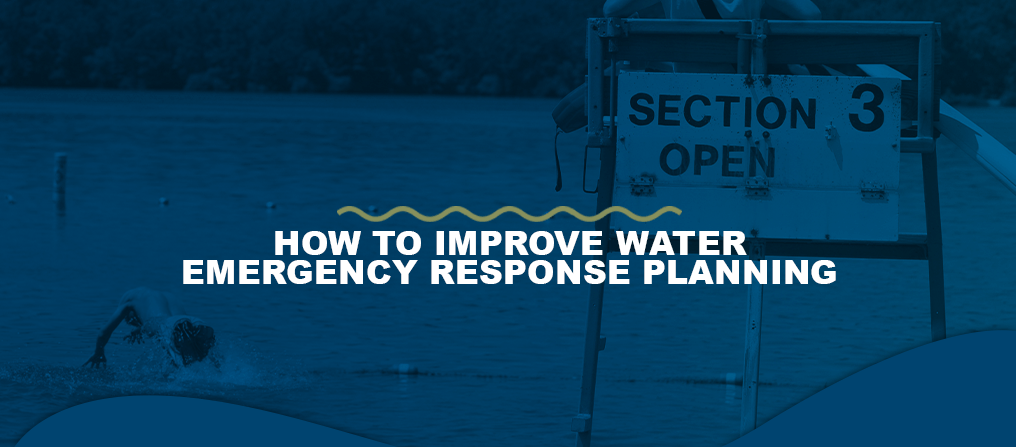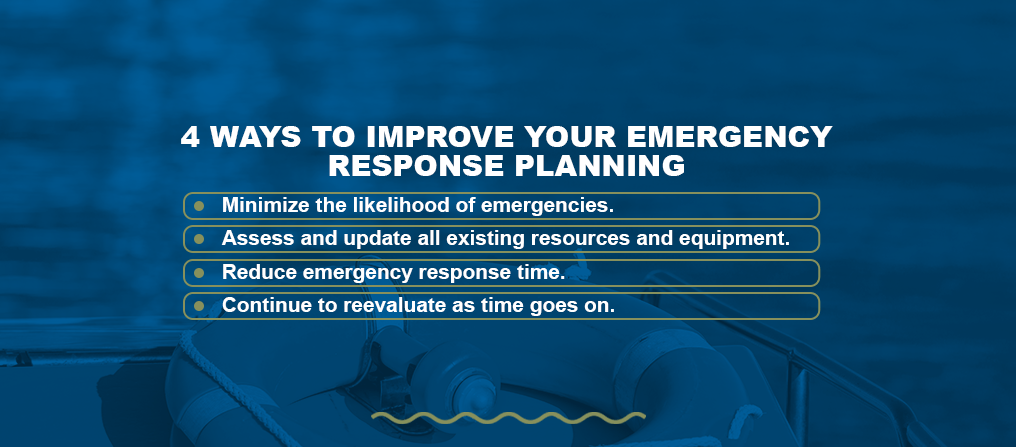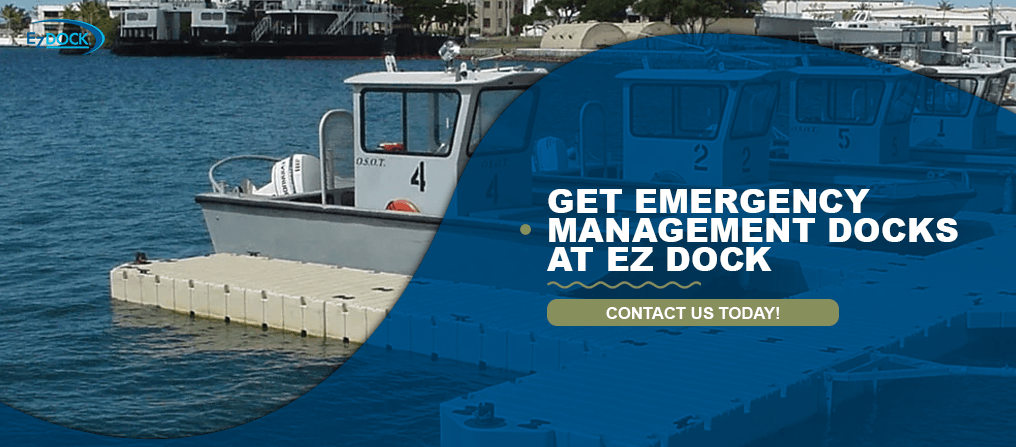Filters
How To Improve Water Emergency Response Planning
Improving your organization’s water emergency response plan is the best way to ensure that all civilians, guests, and emergency personnel can enjoy the water safely. Even those who operate under the fastest and most responsive emergency protocols can benefit from identifying areas for further growth.
Some benefits of emergency planning include:
- Security: The ability to help everyone feel safe and secure on and in the water promotes a positive environment and can help establish a good reputation for certain sectors. For example, a public stretch of beach with an effective, fast-acting emergency team might encourage more tourists to travel and visit the area, boosting the local revenue. The ultimate goal of any emergency plan is to reduce incidents and keep things operating as safely as possible.
- Ensure compliance: By staying up-to-date on your emergency protocols, you’re ensuring you remain compliant with all local, state, and federal laws and guidelines. The alternative can result in costly fees and legal concerns.
- Faster response time: Time is the most critical element of emergency response. By continuing to identify and improve upon potential weaknesses, that response time will grow faster — which often makes all the difference.
- Minimize costs: Emergencies are expensive. Natural disasters cost thousands, sometimes millions of dollars in property damage, and that’s in addition to the cost of emergency supplies and equipment needed for response missions. Part of improving your existing plan includes finding ways to do things more efficiently, which often leads to lower costs.
4 Ways To Improve Your Emergency Response Planning
Though every organization is different, everyone can implement four simple strategies to improve water emergency response planning:
- Minimize the likelihood of emergencies.
- Assess and update all existing resources and equipment.
- Reduce emergency response time.
- Continue to reevaluate as time goes on.
1. Minimize the Likelihood of Emergencies
Every organization’s plan should focus on steps to prevent the likelihood of emergencies taking place. While many are unavoidable, like weather-related incidents, you can work to minimize other common water-based emergencies with some careful planning and preemptive action. For example, to reduce the chances for people slipping on or falling off docks, install safety railings, and opt for a stable dock with a textured, slip-resistant surface.
2. Assess and Update Resources and Equipment
Take the time to assess all existing resources, tools, and rescue equipment and verify that they are functioning correctly and efficiently. Sometimes this might mean repairing or replacing broken equipment, filling in missing or outdated information in contact sheets or adjusting written protocols. Other times, it means upgrading existing equipment that may have a better, faster version available. Incorporate these assessments into your schedule regularly.
Examples of some items to re-assess include the following:
- Communication devices
- Boats, personal watercraft (PWC), and other vessels
- Rescue lights
- GPS locators
- Emergency contact information
- Equipment user manuals
- Emergency management docks
3. Reduce Emergency Response Time
A great way to reduce the time it takes to get to an on-the-water emergency is to upgrade to a docking system that makes boarding your boat or PWC as quick and seamless as possible. For example, instead of working with time-consuming boat tie-outs, you could opt for something like the EZ Dock Boat Port, which enables you to drive on and off the port.
Another way to reduce your organization’s response time is to reach out to industry experts or other businesses or administrators in your field and learn more about their emergency management plans and see what changes you can implement in your own procedures.
4. Continue to Reevaluate
Effective emergency response requires constant, ongoing evaluation, and growth. As personnel, equipment, resources, and risks change over time, so do certain protocols and systems. Implement an ongoing evaluation plan by:
- Assessing emerging risks: Some risks — like hurricanes and capsized vessels — are as old as the sea itself. However, some threats emerge and become more evident over time as things change. For instance, if a resort or tourist attraction opens nearby, bringing along an influx of people participating in watersports and swimming, certain risks increase in areas that may have been calm before. Part of a strong emergency response plan is continually assessing these important changes and readjusting each time a new threat emerges.
- Conducting ongoing training: Ongoing training is the key to keeping emergency personnel sharp and up-to-date on all current protocols and guidelines. Hold regular assessments and mock drills to practice for real emergencies. Seek out industry professionals and resources and participate in regular conferences, seminars, and studies to stay on top of the latest technologies, training techniques, and considerations in your industry.
- Establishing goals and objectives: After every emergency situation, evaluate what happened, including the response time and whether protocols were followed and if equipment and resources failed or otherwise impeded efforts. Set goals for training and rescue missions to mark accomplishments and identify areas for improvement.
As your organization implements changes, continue to communicate with the public and make sure everyone understands what is required of them to promote a safe experience for all. This includes reviewing how recreational boaters should use commercial docking areas, what parts of a body of water are off-limits or dangerous to untrained personnel, and what to do in an emergency.
Benefits of Choosing Floating Emergency Management Docks
One of the best decisions you can make to improve your water emergency response plan is to invest in a floating dock system. Floating docks by EZ Dock can increase your response time and provide much-needed security and peace of mind during high-risk and time-sensitive emergencies.
When you choose floating emergency management docks from EZ Dock, you get:
- Reliable durability: When an emergency arises on the water, you need a docking system that you can count on to have your vessels waiting and ready. Unlike traditional docks, which may collapse during a hurricane and cause even further damage, EZ Dock floating emergency management docks are made of strong polyethylene and shock-absorbing rubber couplers that make them stable and secure, even during windy and wavy conditions. Strong emergency management docks from EZ Dock are also virtually maintenance-free, meaning no costly or unexpected repairs.
- Faster response time: Floating emergency management docks and launch systems adjust with the water level as it rises and falls. This means you never have to worry about your dock becoming submerged or inaccessible during high waters and flooding, and that your boat and the dock will always be in-line with the water, eliminating the need to strain, reach or work to get into the vessel when time is of the essence.
- Supreme weather-resistance: Many water-based emergencies stem from weather-related accidents, including those caused by tropical storms and hurricanes. EZ Dock emergency management docks remain stable and secure, even during severe weather. These docks can withstand most tropical, low-category, and mid-category storms, so you know you can rely on your dock to be there when you need it most.
Get Emergency Management Docks at EZ Dock
When a water emergency happens, you need the right equipment and resources to stabilize the situation quickly. EZ Dock is committed to providing top-quality, reliable, and customizable floating docks to assist relief organizations and emergency management teams in keeping waters safe for all. Learn more about our floating dock configurations and boat porting systems and request a quote today.













